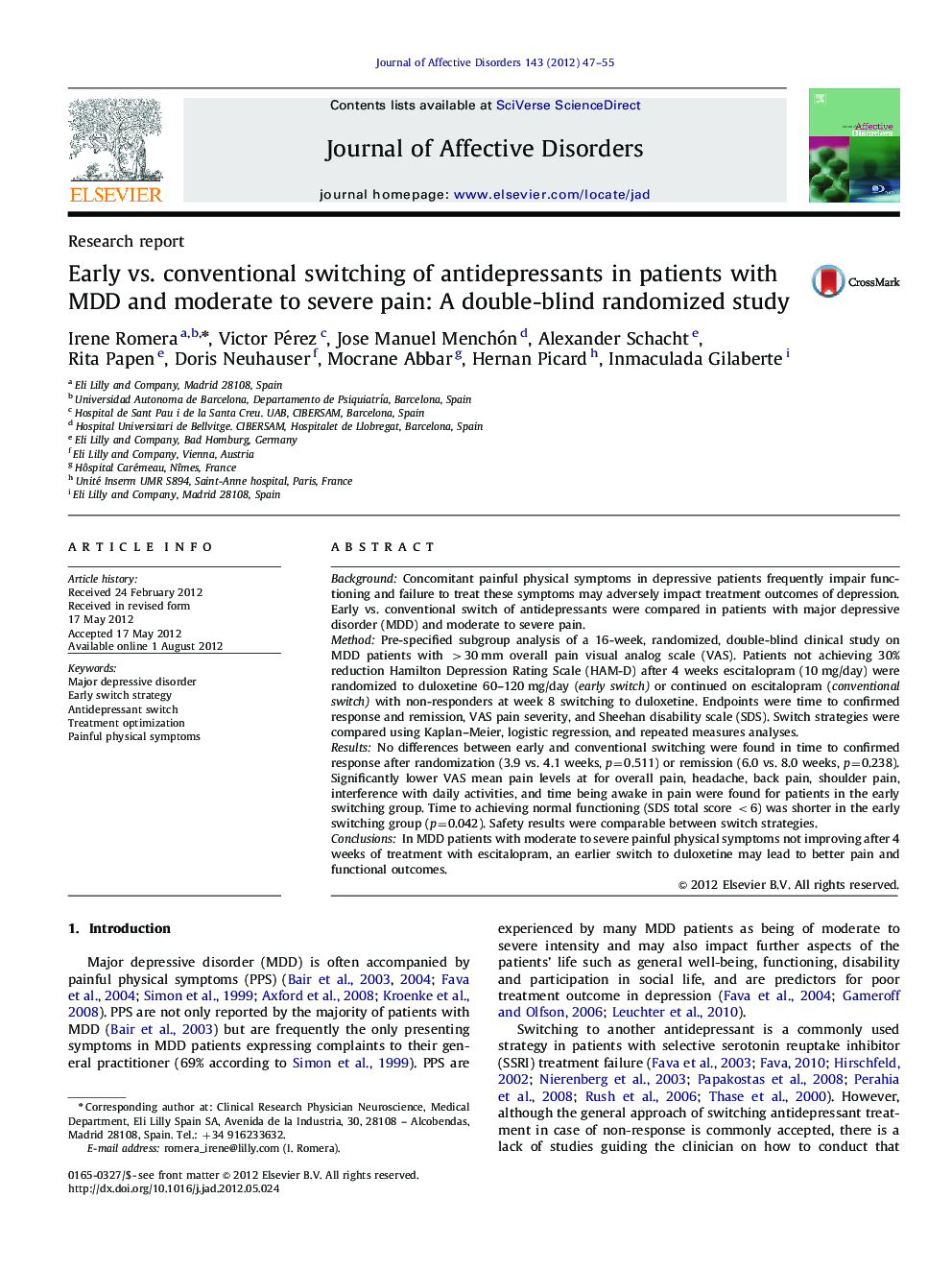| Article ID | Journal | Published Year | Pages | File Type |
|---|---|---|---|---|
| 4186115 | Journal of Affective Disorders | 2012 | 9 Pages |
BackgroundConcomitant painful physical symptoms in depressive patients frequently impair functioning and failure to treat these symptoms may adversely impact treatment outcomes of depression. Early vs. conventional switch of antidepressants were compared in patients with major depressive disorder (MDD) and moderate to severe pain.MethodPre-specified subgroup analysis of a 16-week, randomized, double-blind clinical study on MDD patients with >30 mm overall pain visual analog scale (VAS). Patients not achieving 30% reduction Hamilton Depression Rating Scale (HAM-D) after 4 weeks escitalopram (10 mg/day) were randomized to duloxetine 60–120 mg/day (early switch) or continued on escitalopram (conventional switch) with non-responders at week 8 switching to duloxetine. Endpoints were time to confirmed response and remission, VAS pain severity, and Sheehan disability scale (SDS). Switch strategies were compared using Kaplan–Meier, logistic regression, and repeated measures analyses.ResultsNo differences between early and conventional switching were found in time to confirmed response after randomization (3.9 vs. 4.1 weeks, p=0.511) or remission (6.0 vs. 8.0 weeks, p=0.238). Significantly lower VAS mean pain levels at for overall pain, headache, back pain, shoulder pain, interference with daily activities, and time being awake in pain were found for patients in the early switching group. Time to achieving normal functioning (SDS total score <6) was shorter in the early switching group (p=0.042). Safety results were comparable between switch strategies.ConclusionsIn MDD patients with moderate to severe painful physical symptoms not improving after 4 weeks of treatment with escitalopram, an earlier switch to duloxetine may lead to better pain and functional outcomes.
